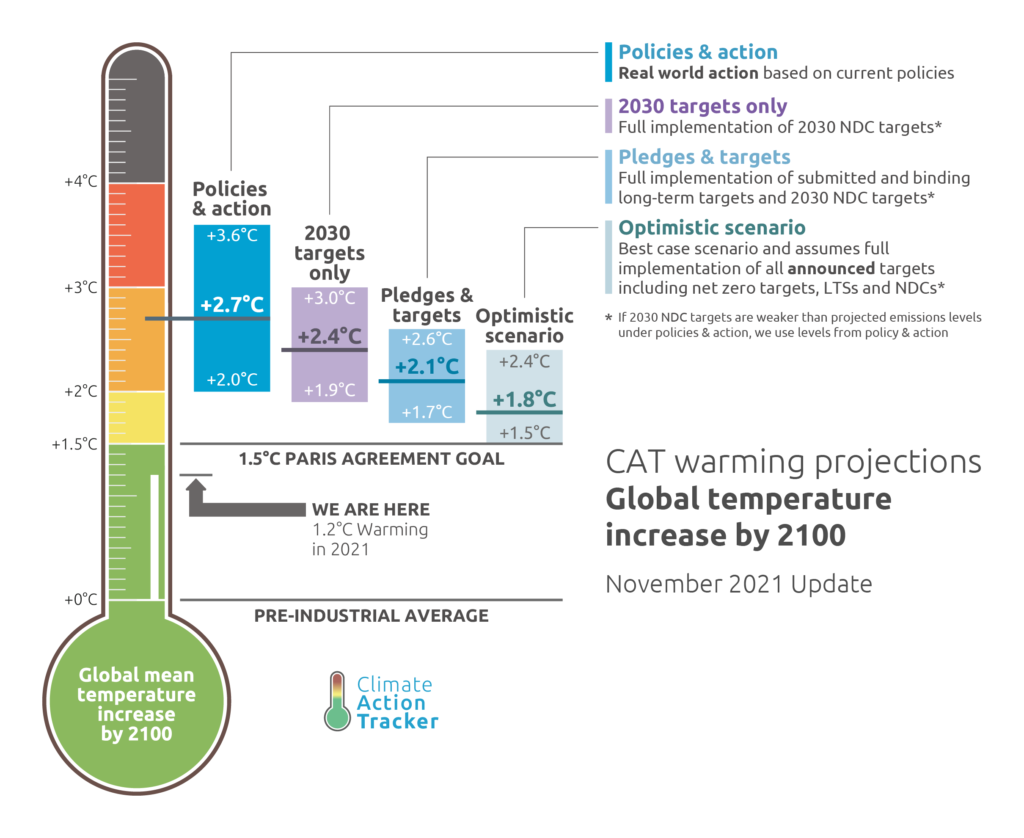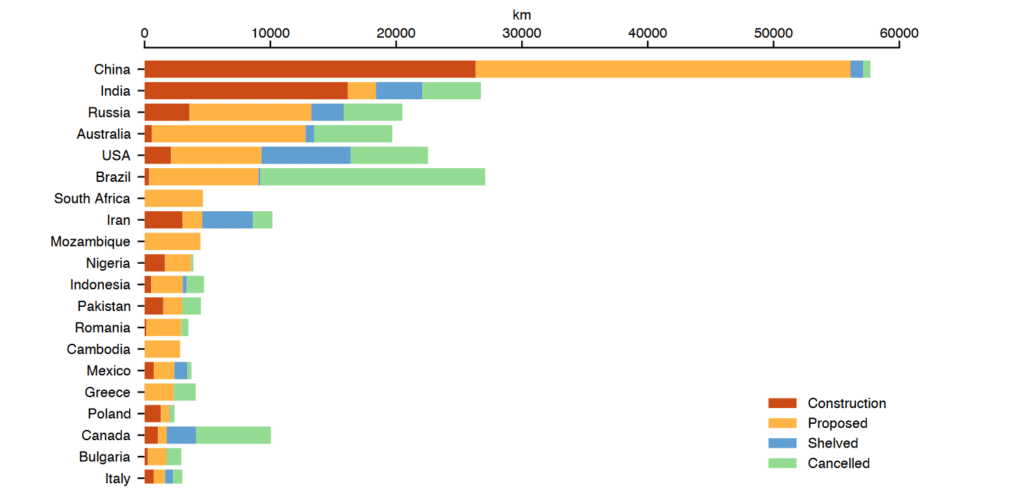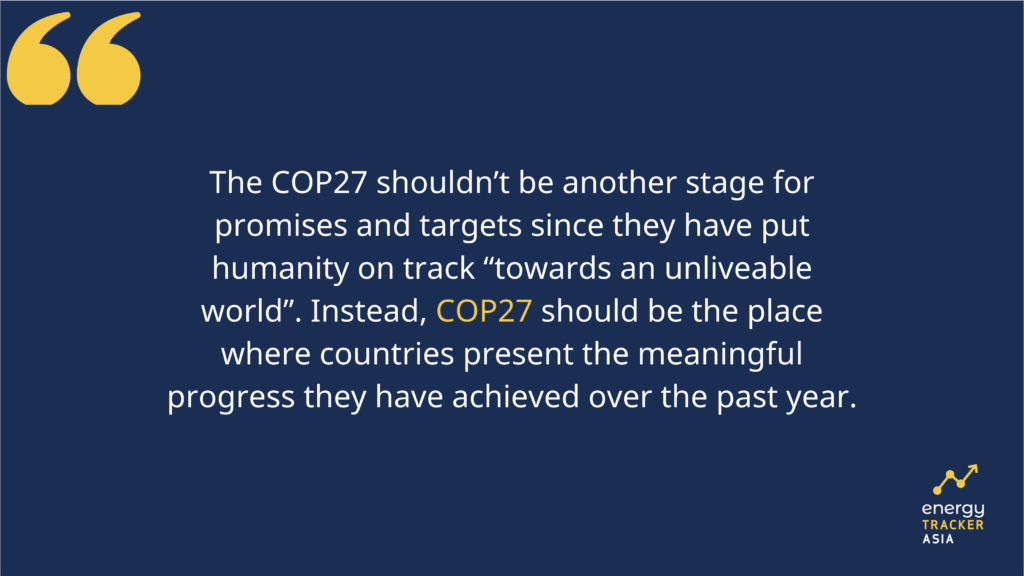After COP26, Towards COP27, Where Are We At Today
08 June 2022 – by Viktor Tachev Comments (0)
While COP26 set out ambitious targets, as we approach COP27, which will take place in Sharm El-Sheikh, Egypt, it becomes evident that most of them remain on paper. This is no longer an issue but an existential problem in the wake of the latest IPCC report.
After COP26 and Towards COP27 2022 UN Climate Change Conference Egypt
At the COP26 in November 2021, global leaders and the international community made ambitious pledges regarding climate crisis, climate justice, and civil society. However, six months later, the progress leaves a lot to be desired.
COP26 Pledge: Ending Coal
COP26 marked the launch of the “Coal to Clean” initiative, aiming for a rapid renewable energy scale-up and a shift away from coal by 2040. Nations committed to ending international public financing for coal, oil and gas projects by the end of 2022.
Where We Are Today
The IPCC warns that coal use needs to be almost eliminated within 30 years. Gas dependence and oil use should be reduced by 45% and 60% by the middle of the century.
While coal is in decline, the primary reason isn’t that leaders remained true to their words, but mostly their willingness for energy independence, fueled by Russia’s invasion of Ukraine.
Furthermore, oil and gas project financing continues and is even on the rise in some regions.
COP26 Pledge: Bending the Curve to 1.5°C
As countries headed to the COP26, their commitments had put the world on a 2.9°C trajectory by 2100. Countries agreed to return for the next round of climate talks at the COP27 climate summit in November 2022, with stronger commitments to put the world on track for 1.5°C.
Where We Are Today
IPCC’s latest report shows that the world isn’t getting closer to the 1.5°C target of global temperature rise. If it remains on its current track, global average temperatures will rise 3.2°C above preindustrial levels by 2100.
According to the scientists, if countries don’t improve their emission reductions targets by the time COP27 comes, the 1.5°C target can be considered “gone.”

COP26 Pledge: Climate Finance – Increased “Green” Funding to Developing Countries
In Glasgow, developed countries again committed to providing USD 100 billion of green financing annually to developing nations. Considering that financial support for mitigation is much greater than adaptation, nations also agreed to double adaptation funds.
Some of the world’s leading banks and asset managers are committed to accelerating the transition to a net-zero emissions economy. The so-called Glasgow Financial Alliance for Net Zero includes leading financial institutions pledging to report annually on the carbon emissions of their portfolios. Furthermore, the UN secretary-general António Guterres will launch a greenwash watchdog to prevent greenwashing.
Where We Are Today
Rich countries still haven’t met their USD 100 billion climate financing pledge, and the climate finance goal has been falling short year after year. Furthermore, the promised USD 100 billion a year is insufficient to cover the cost for low-income developing countries to adapt to climate impacts.
Besides, the doubling of adaptation funds countries agreed on won’t be enough. According to the U.N. Environment Program, adaptation funds must quadruple by 2030, which will require more international cooperation.
In terms of private sector financing, institutions still fund fossil fuels projects more than renewable energy. What’s more, they are also greenwashing. A report by Reclaim Finance and other NGOs, published in February 2022, showed that, despite being a part of the Glasgow Financial Alliance for Net Zero, some leading banks are also among the world’s biggest coal supporters.
COP26 Pledge: a Global Methane Pledge
Glasgow became a stage for the launch of the Global Methane Pledge, an initiative to reduce global methane emissions. Over 100 countries back the initiative. Among them are Asian nations, including Japan, Malaysia, the Philippines, South Korea, Indonesia and Vietnam. China and India didn’t join the pledge.
Where We Are Today
The global demand for natural gas, among the top sources of methane, is growing. The problem is especially glaring in Asia, with China and India poised to see significant growth in the next years.

China also tops the chart for the most significant natural gas pipeline development plans, followed by Indonesia, Cambodia, and Vietnam.
Focus on Asia – the Progress Since COP26 and Who Can Hold Their Head High at COP27
China, Japan and India didn’t sign the coal to clean statement at the COP26. However, three of the world’s top ten coal markets, namely South Korea, Vietnam and Indonesia, committed to ending coal generation for the first time at the COP26. This was a big move for Asia, considering that the region accounts for 80% of the global coal power.
Despite some questionable moves, since COP26, there have been positive developments across most Asian countries.
In China, the government has concentrated on implementing the targets through policies in specific sectors. The country also drastically reduced coal imports.
Japan’s efforts went mainly towards considering and planning for new policies rather than any further regulatory and legislative changes.
South Korea proposed a notable 62% increase in its carbon neutrality budget. The government also introduced climate change impact assessments and established the Korean Climate Action Fund to provide financial support for the green transition.
Vietnam revised its PDP8 to focus more significantly on renewable energy development and dramatically cut CO2 emissions. The country is also developing a mandatory emissions reporting system.
Since the COP26, Indonesia has introduced a strict carbon reduction roadmap. Among the measures are a 29% carbon emission reduction target by 2030, increased renewable energy development and more.
Looking Towards COP27 – Global Warming
In his remarks for the months left till COP27, the COP26 president Alok Sharma warned that leaders hadn’t done enough to deliver on their Glasgow commitments.
The COP27 shouldn’t be another stage for promises and targets since they have put humanity on track “towards an unlivable world,” as UN’s chief Guterres said. Instead, COP27 Egypt should be the place where countries present the meaningful progress they have achieved over the past year.
Due to decades of inaction, we have self-denied the opportunity for a gradual and smooth transition. Now the world needs to act urgently. And the COP27 is the perfect stage for this.

by Viktor Tachev
Viktor has years of experience in financial markets and energy finance, working as a marketing consultant and content creator for leading institutions, NGOs, and tech startups. He is a regular contributor to knowledge hubs and magazines, tackling the latest trends in sustainability and green energy.
Read more